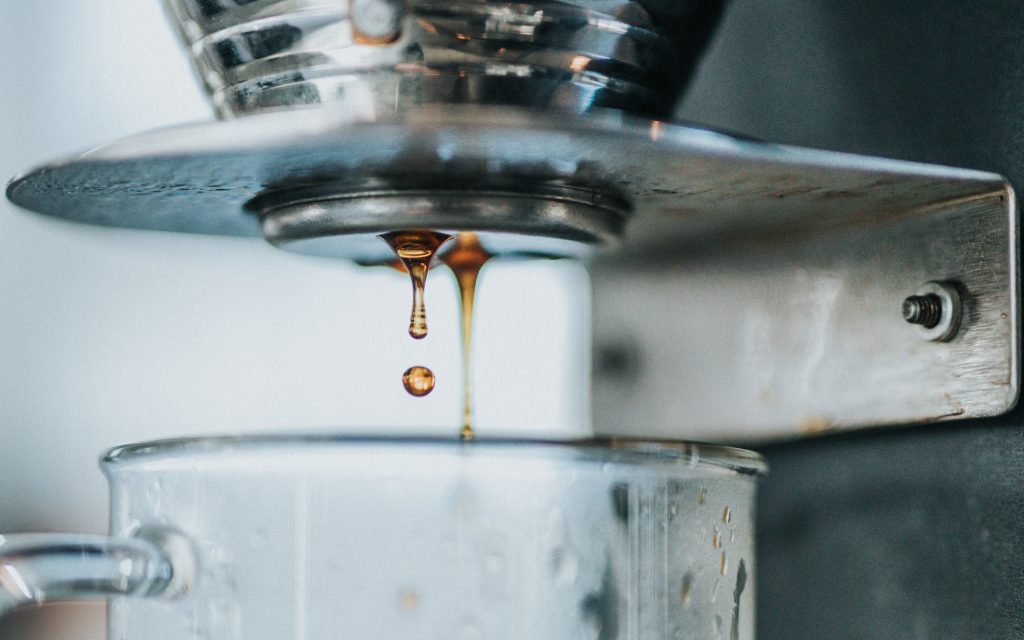Home coffee machines: How are manufacturers innovating?

Over the past few years – especially following the pandemic – preparing coffee at home has undoubtedly become more popular. According to Statista, more than 65% of the US population said they made coffee at home every day in 2023.
One of many reasons for the increase in at-home brewing is consumers’ growing interest in coffee education. And in turn, as consumers become more and more knowledgeable, home coffee machines have started to become more technologically advanced.
Home brewers now want to control a wider range of extraction variables – with some also wanting to prepare as many different coffee beverages as possible from one machine.
To learn more, I spoke to Alexia Chan, Chief Marketing Officer at KUKU Maker – a new home coffee machine which extracts a variety of coffee drinks.
You may also like our article on how to brew larger volumes of coffee at home.
The ongoing evolution of home coffee machines
Around the world, the specialty coffee market is steadily growing and diversifying. The rise in consumption is driven by many factors, including the influence of larger multinational chains, a general push for higher-quality products, and an increase in at-home brewing.
Regarding the latter specifically, Covid-19 was a major driving force. With so many coffee shops closed during the pandemic, coffee drinkers wanted to replicate café-quality drinks at home.
To learn how to do this, many consumers invested in specialty coffee education – including taking online courses, listening to podcasts, and following coffee influencers.
Additionally, to prepare high-quality coffee beverages, consumers also started to invest more time and money into their home coffee setups. During the first half of 2021, sales of equipment like espresso machines, cold brew makers, and milk steaming systems grew by double digits compared to the same period in the previous year.
So in response to this rapid rise in demand for home brewing equipment, coffee machine manufacturers are becoming increasingly innovative.
“Over the past decade or so, coffee machine manufacturers have moved towards greater automation and including more integrated features,” Alexia tells me. “However, not much attention has been paid to the variety of extraction methods available per machine.”
It’s only been in recent years that home coffee machines have started to become far more technologically advanced to include a range of brewing methods, such as the KUKU Maker. Alexia says the machine can prepare several different coffee drinks, such as espresso, pour over, cold brew, and cold-brewed espresso.
Growing demand for more advanced home machines
Even after the pandemic, home coffee consumption has remained strong. According to the National Coffee Association’s 2023 fall National Coffee Data Trends report, 82% of people still drank coffee at home – representing a 4% increase on January 2020.
With consumers buying higher-quality beans, they also need to know how to properly extract them to get the best results. So similarly, more and more people want to invest in premium home equipment to improve beverage consistency and quality.
Just like commercial machines, home coffee systems are also becoming more technologically-advanced and intuitive. Alexia explains that the KUKU Maker includes four extraction methods to prepare different types of coffee beverages and achieve different flavour profiles:
Low-temperature concentrated extraction
Low-temperature brewing
High-temperature extraction
High-temperature brewing
“Coffee isn’t one-dimensional when it comes to flavour and aroma,” she says. “Using different brewing methods brings out different aspects of a coffee, so adjusting extraction parameters is crucial to explore its full potential.”
She tells me that the KUKU Maker uses a cyclic extraction method. This means the machine divides the brewing water into small separate streams that pass through the ground coffee until the desired extraction rate is achieved – also helping to reduce channelling and overextraction.
Additionally, the machine uses centrifugal force to generate extraction pressure, which can be controlled through varying the rotational speed of the motor. This can also help to improve the uniformity of extraction, which can result in more balanced and well-rounded flavours.
Consumers want more control over different extraction variables
In coffee shops around the world, it’s the job of the baristas to tweak and change a number of extraction variables to serve excellent espresso and filter coffee. And increasingly so, more and more home brewers want to do the same.
“Many home espresso machines extract using a fixed level of pressure with a set extraction time,” Alexia explains. “You may also need to use the same fine grind size.”
Unlike traditional home coffee machines, their modern counterparts allow users to exert more control over different brewing variables. For instance, the KUKU Maker lets you control different variables – such as brew temperature, time, and pressure – independent of one another.
“We often refer to this as ‘parameter separation,’ which means isolating different variables so we can achieve more control over extraction,” Alexia says.
Unlike more traditional home espresso machines which require manual tamping and distribution techniques, the puck-free design of the KUKU Maker’s espresso extraction feature means the grounds can be poured directly into the funnel. The centrifugal force then ensures more uniform distribution and even pressure throughout the brewing process.
Temperature is also one of the most important brewing parameters – having a huge impact on the flavours and the aromas in the cup. In addition to leveraging an electromagnetic induction heating system, the KUKU Maker also allows users to brew with ice-cold and room-temperature water to prepare a wide range of beverages.
The future of the home coffee machine market
As more consumers want to elevate their home coffee setups, demand for more technologically-advanced and automated home machines is sure to remain steady.
“The level of automation of home coffee machines has already progressed significantly,” Alexia says. With rising inflation, however, consumers are sure to become more cost-conscious, so we’ll likely see more people investing in machines that offer multiple brewing methods.
As of now, the market for these home systems remains relatively small, but will undoubtedly grow as specialty coffee consumers and professionals push for further innovation. For example, KUKU Maker’s Kickstarter campaign has received more than 1,220 backers investing over US $880,011 – indicating clear interest in machines which brew different coffee drinks.
Moreover, as the cold coffee market continues to boom, it will become even more important for home machines to include both hot and cold coffee extraction.
“I think the future of the home coffee machine market will be to meet consumer demand for experimenting with coffee flavour,” Alexia tells me.
Design and app technology
Many coffee consumers want their machines to not only perform to high standards, but to also look aesthetically pleasing. What’s more, not every home barista has the space for a larger-sized machine, too.
As a result, home coffee machines are becoming more compact, and are increasingly available in a wide variety of modern and stylish designs.
Technology is also a crucial part of coffee machine evolution. As more commercial machines include integrated app technologies, home systems are following suit. For instance, the KUKU Maker can be controlled via a smartphone app – creating a more user-friendly experience.
Increasing at-home coffee consumption, even post-pandemic, is a promising sign for the growth of the home coffee machine market. Coffee enthusiasts are also demanding more from their home systems, which is paving the way for more sophisticated and versatile machines.
A big part of this technological innovation includes having the ability to prepare different types of coffee drinks from one machine. So as this trend continues, consumers will be able to experiment with different brewing variables and experience a whole new world of coffee flavour.
Enjoyed this? Then read our article on how to recreate a coffee shop cappuccino at home.
Photo credits: KUKU Maker
Perfect Daily Grind
Please note: KUKU Maker is a sponsor of Perfect Daily Grind.
Want to read more articles like this? Sign up for our newsletter!
The post Home coffee machines: How are manufacturers innovating? appeared first on Perfect Daily Grind.





Responses